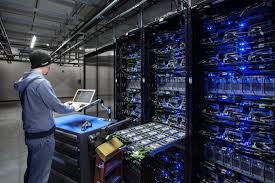
Child and Adolescent Development
Order Instructions:
Your community is opening a brand new community center. Now that you are an expert in the field, you have been chosen to lead a development team that will create a proposal for interactive, fun, and educational programming activities that will be provided for children and adolescents in this center. Utilize problem-solving techniques in exploring developmental issues, grounded in child development, in order to assess what activities and items should be included in each program. Once you have chosen these features, you will present your ideas to a mock city council board (i.e. your instructor) with both a written proposal describing the programming, as well as an interactive presentation that will illustrate your ideas for promoting continued learning throughout childhood and adolescence.
You have been asked to propose programming for five different age groups in the community center:
Infant (0-1 year)
Toddler (1-3 years)
Early Childhood (3-6 years)
Middle/Late Childhood (7-12 years)
Adolescence (13-18 years)
There are two parts to your final project; a written proposal (Part A) and a visual presentation (Part B). In Part A, you will be creating a written proposal in which you identify and describe at least two weekly activities for each age group (for a total of 10 activities) that address their developmental pathways: physical, cognitive, and psychosocial. All three domains of development must be addressed within your classes or activities. For example, you may have one activity which enhances cognitive and psychosocial development and a second activity which enhances physical development. In addition to identifying these activities, you will demonstrate a foundational knowledge of the age group’s developmental continuum by explaining your reasoning for choosing each activity, based on your analysis of theory and current child development research.
Additionally, you will go “shopping” for at least one age-appropriate game, toy, picture, or other “play” item to enhance the chosen activities within each age group. Keep in mind that this may include things like art, music, technology, or safety gear as you deem fit. For each item that you recommend, your written proposal will provide a link to a website from which the item can be purchased by the city, as well as an explanation for why the city should purchase the item informed by research and theory.
The overall goal of the written proposal and visual presentation is much like that of a grant proposal, in which a developer must convince the city council that their new business or activity is both cost-effective and beneficial to the community. You are encouraged to be creative and persuasive in your proposal, but remember that everything must be supported by the theories and research covered in our class. Included in Part A is a Written Proposal Template, demonstrating what information should be included in your written portion of the project. While you are expected to cite facts and include a reference page in your proposal, these do not need to be read out loud in your final visual presentation.
Part A: Written Proposal
You will utilize the PSY104 Written Proposal template to create your script. Enter the requested information on the title page where indicated. Where you find the text “This is where you will…” within the proposal, please remove that and enter your own content. The headings in bold and the outline formatting with numbers and letters should not be altered.
In your Written Proposal, you must include the following:
Complete each section of the template including the information requested.
Within section “iv” for each room, you will be asked to justify your activities and items by analyzing interactions of the major themes: Health and Well-Being, Family and Parenting, Education, Culture and Gender as factors influencing the developmental physical, cognitive and psychosocial pathways. Your written proposal must address how you have accounted for each of these themes in its associated room as they relate to physical, cognitive, and psychosocial development. Each theme must be included in at least one room, and each room must address one or more themes. (Please see these samples for ways to explain how you have accounted for this.)
Cite your sources according to APA style as outlined in the Ashford Writing Center. For information regarding APA samples and tutorials, visit the Ashford Writing Center, located within the Learning Resources tab on the left navigation toolbar in your online course. The EBSCOHost and PSYCinfo databases in the Ashford Online Library are helpful sources of information, as are the required and recommended resources found in your course materials. To locate EBSCOHost and PSYCinfo, visit the Ashford Online Library through the tab on the left navigation toolbar in your online course and select “Databases by Subject” and then “Psychology.” (For further assistance in researching scholarly sources, please access the tutorials page on the Ashford University Library website.)
SAMPLE ANSWER
Kelly Van Aken
PSY 104 Child and Adolescent Development
Valerie Jackson
July 6, 2015
Introductory Paragraph:
Kelly Van Aken is community center proposed to be constructed in our community. The community center mission is to help children become self confident and independent. The facility will provide a platform where children will connect, interact, share, and learn. The center goal is to establish atmosphere where child active curiosity, appreciation for nature and large motor skills are developed. We are requesting your (City Council) support the establishment of this community center, which will cater the following activities specific to each age group.
- Age Group #1 – Infants
This age group covers zero to 12months. The activity identified for this group is the nesting toys. The goal for this activity is to enhance general knowledge and to improve cognitive development, physical development, and cognitive skills. The material required for this activity includes the nesting cups and stacking materials. The nested cups will be stuck together, and given to the toddler to play with it, to discover what they can do with these objects. Where the toddler cannot pull the nested cups out of the position, the toddler should be guided on how to do so. The toddler should be shown on how to build tower, knock it down, filling the cups with cornmeal or sand and other activities that can be used with the nested cup. This way, the physical, cognitive, and other socio emotional activities will be enhanced. This improves parent-child relationship, and improves effective communication (O’Connor, Monk, & Fitelson, 2013).
The second activity in this age group is the rolling balls. This is activity is geared towards physical development as well as the development of motor skills. This involves interactive activity where the parent sits on the floor and rolls the ball towards the toddler. This will enable the toddler to crawl towards the ball. Different toys of different weight can be used. This cognitive development of the child is in accordance to Jean Piaget theory that defines that child growth occurs because of processes round them. This way, the child can learn to talk, and interact with other children (Sengsavang & Krettenauer, 2015).
Research indicates that the rolling balls are important tools because help the child develop watchfulness, even thinking, emotions, and concentration. The child is fascinated by the turning of the ball and other spherical objects child may become surprised, happy, or surprised that the ball runs away from him. The rolling ball also motivates the child to move (O’Connor, Monk, & Fitelson, 2013).
The center will require over 100 rolling balls, which can be bought from Amazon. Com http://www.amazon.com/toys/b?node=165793011
- Age Group #2 – Toddlers
This group covers 12 months to 36 months. The first activity to be considered is the “Print it” activity. This activity was chosen because it improves toddler’s physical as well as motor skills. The activity involves use of finger paint, finger paint paper, and washable table. The toddlers fingers are put directly in finger paint (many colors can be used), and printing them on the paper. Toddlers should be encouraged to be creative. This activity is messy activity and will require the toddlers to wear apron. Finger paint is expensive. Despite the fact that it is fun and creative activity, research indicates that this activity improves emotional development because the child enjoys the feel of the paint and watching the designs created. When they make new designs, the toddler’s self-esteem is enhanced. It also increases the development of manipulative skills and co-ordination as a toddler uses his or her skill to balance muscle control and spatial awareness (Yoon, 2012).
The second activity for this group is stamps and stickers activity. This is an indoor activity, which involves uses markers, stickers, stamps, ink, and paper. The toddler is shown how to stick the stickers on the paper, and where sticker has a theme, the child should be explained about it. The child should paint different things in the environment such as trees, cars, mum, and other members of the family. This activity is important because it improves communication development, motor skills as well physical development. This improves the relationship between a child and the caregivers as illustrated by the attachment theory by John Bolby. This theory indicates the relationship between child and parent/ caregiver influences child development and their social relationships in their later stage of life (Sengsavang & Krettenauer, 2015).
The child also communicates through art. This is in accordance Jean Piaget Lev Vygotsky on socio cultural theory where children are believed to learn activities through hand on experiences (O’Connor, Monk, & Fitelson, 2013). The city council is requested to purchase the finger paint to help the children develop and grow socio-culturally. This is obtained in ToyRus from http://www.toysrus.com/family/index.jsp?categoryId=3255200
- Age Group #3 – Early Childhood
This group includes children of about 3 to 6 years. The first activity chosen is the gather and sort activity. The activity is geared to boosting the child intellectual knowledge. The activity involves visiting parks, or community center surrounding and encouraging the children to collect and look closely to objects that catch their attention. This could include rocks, flowers, and insects. The younger children learn about the different things and their differences in terms of texture, size, state (liquid, solid, or gaseous) and their benefits. This way, the children express themselves as they interact with the natural environment. In fact, some children can learn to interact, lead, and communicate with others. This builds child’s self-esteem, as they feel acknowledged and important. This is in accordance to behavioral child development theories by Ivan Pavlov , which stipulates that development is shaped by children experiences (Sengsavang & Krettenauer, 2015).
The second activity is sack race. What is required is a sack or large pillowcases for every child, and plenty of space. The children are divided into teams, and a turning point is designated. The first member of team is handed a sack and race begins. The children should race to the marker and turn back to the next individual in the team. This continues until the last person, and the wining team is the team to have all members jump and sit. This game is classic for children development of motor skills and physical activeness. The children also learn to work cooperatively in groups and understand that communication as well as interaction is very important in life (Yoon, 2012).
The importance of this activity is that it improves child social interaction during activities. This will enable identifying the child character i.e. is a child an onlooker, solitary independent, associative or eve cooperative. This is in accordance with the social learning theory by A. Bandura in that, children learn by watching other people that they interact. Through these activities, it is important it improve the cognitive, social, and motor skills development. In these activities, the items required are the sack, because they can be used as collection bags, and during sack race (O’Connor, Monk, & Fitelson, 2013). These can be obtained from Amazon.com because they have the best quality products and in all sizes. They can be reached through http://www.amazon.com/LA-Linen-Burlap-Potato-Sacks/dp/B00D6MRD4U
- Age Group #4 – Middle/Late Childhood
The activities chosen will include constructive use leisure time for 7 to 12 years children. Middle school children will be given opportunity to take music classes by having lecture on music technique. The children will be provided with instruments of their choice to learn. This form of art is important because it enables the children develop discipline and high sense of responsibility. This activity improves child self esteem and builds up their confidence as the form recitals in front of their peers, parents, and friends. This activity also provides the most effective environment for socialization, and gives the child a platform to explore their talents (O’Connor, Monk, & Fitelson, 2013).
The second activity is swimming activity. Statistics indicates that 37% of Americans do not know how to swim. The total deaths attributable to drowning have been 137 children. This is the main reason as to why the swimming program will be included. Additionally, swimming will improve the child physical development as well as motor skills. Research indicates that swimming improves muscoskeleton activities as well as cardiovascular activities. This activity enables the child to explore their potentials, and simultaneously learn that the peers have different capacities as they have. The activity teaches the child to compromise so that they can work as a team, and become disciplined on ways to handle the difficulties when addressing the challenges as they mature from pre-adolescence to adolescence (Sengsavang & Krettenauer, 2015).
According to sociologist, children development is not guided by vacuum but is highly influenced by the environment they live and the challenges they undergo. These activities are chosen to keep children away from negative influences by the social media and make them more responsible with their lives. This is important because children in this age are expressive, very egocentric, and spontaneous. Music and sports activity will enable them express their emotions and simultaneously develop high discipline levels as they learn to play by the institution rules. The city council can help in buying music tools, especially violin to help the children learn (Yoon, 2012). This can be obtained from a music stores including Guitarcenter http://www.guitarcenter.com/ .
- Age Group #5 – Adolescence
The center aims at establishing youth groups, which will help the adolescence, identify whom they are. These groups will be used to discuss issues they face during their transition into adulthood. This includes issues such as trust and leadership roles in their lives. Establishing a youth radio station could improve lives of most adolescence in this community, who can volunteer in various activities such as organizing group discussion, becoming radio presenter, and writing informative articles. This is important as it will improve the socioemotional development, and improve cognitive function and educative as they acquire new skills (Sengsavang & Krettenauer, 2015).
The second activities identified are youth activities used to train youth on building trust and leadership. In this activity, the youth is blindfolded as the members direct them on how to find the right path to reach the designated area. The roles are switched until all members of the team participate. Building blocks are also important activity as the participants pool their efforts together to build an object, which is verbally described to them by the leader. This improves cognitive function; physical development and socioemotional development as the participants learn to work as a team, listen, and communicate effectively (Yoon, 2012).
These activities are important as they help child development as identified by the social learning theory. In this theory, children behavior is influenced by extrinsic and intrinsic influences, and they determine child satisfaction, self-confidence, and accomplishment (O’Connor, Monk, & Fitelson, 2013). In this case, city council can help purchase computers, which will help with setting up radio station activities. This can be bought from Best buy http://www.bestbuy.com/site/electronics/computers-pcs/abcat0500000.c?id=abcat0500000.
Conclusion
For a long time, child developments in this community have been largely overlooked. Parent’s perspective on children is that they are smaller versions of adults; and parents pay little attention to advance the cognitive abilities of the children, communication development, and physical growth. The community center aims at transforming lives of people and children living in this community. We are grateful for the immense support and advice during the establishment of this beneficial activity.
REFERENCES
O’Connor, T., Monk, C., & Fitelson, E. (2013). Practitioner Review: Maternal mood in pregnancy and child development – implications for child psychology and psychiatry. Journal Of Child Psychology And Psychiatry, 55(2), 99-111. doi:10.1111/jcpp.12153
Sengsavang, S., & Krettenauer, T. (2015). Children’s Moral Self-Concept: The Role of Aggression and Parent–Child Relationships. Merrill-Palmer Quarterly, 61(2), 213-235. doi:10.13110/merrpalmquar1982.61.2.0213
Yoon, Soo Jung,. (2012). The Mediating effects of teacher-child relationships on children’s self-control and aggression. Korean journal of early childhood education, 32(5), 145-161. doi:10.18023/kjece.2012.32.5.007
We can write this or a similar paper for you! Simply fill the order form!












